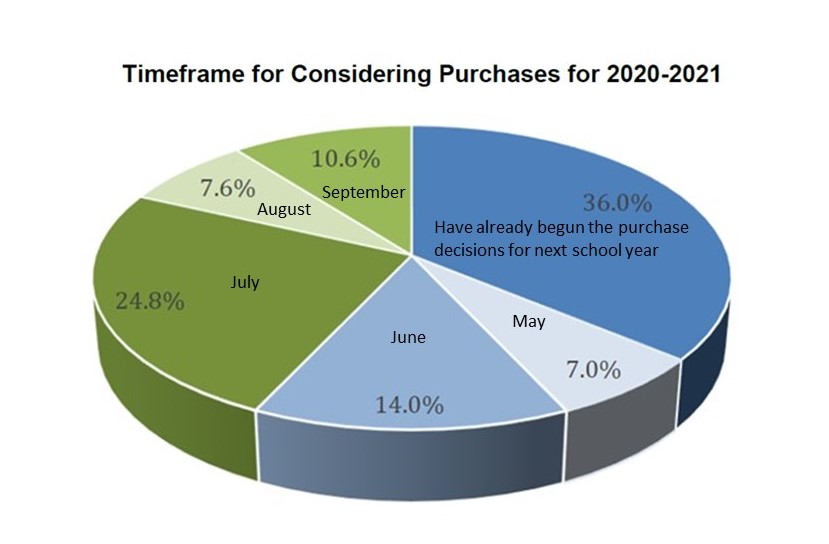The coronavirus pandemic has caused dramatic changes in how K‑12 districts and schools in the U.S. are operating and in their outlook for the 2020-2021 school year. Providers of education products and services have an informal sense of some of the challenges their clients are facing, and the education media offer stories of how teachers and administrators are coping. However, most of this information is anecdotal.
To improve our understanding of district and school leaders’ experience with the coronavirus pandemic, Interactive Educational Systems Design (IESD) conducted a large-scale, national survey during April and May 2020 focused on how the pandemic is impacting the K‑12 market, and on district and school plans for the 2020-2021 school year.
Partnering with IESD on this research was MCH Strategic Data. MCH provided the contact data for inviting district and school leaders to complete the survey, and they collaborated on the development of the survey questionnaire.
About the Respondents
A total of 1,465 qualified leaders in K-12 education completed the survey. This included both district administrators and school principals across all 50 states plus the District of Columbia, and a mix of:
- Urban, suburban, and rural districts
- District enrollment sizes
- Districts by Title I percent (an indicator of socio-economic status)
The school principals represented a mix of elementary, middle, and high schools.
District/School Experience During the Coronavirus Pandemic
The survey included several questions focused on district and school administrators’ experience during the pandemic. Here are some highlights.
- When respondents were asked about their district’s or school’s response to teaching and learning during the pandemic, the vast majority (more the 90%) indicated that they switched to online teaching and learning that requires internet access. A majority reported various types of interaction with families, including sending home print packets of school work, teachers calling individual families to support student learning, and sending suggestions to parents for supporting their children’s learning.
- District administrators and school principals were asked about their institution’s use of systems, programs, and resources in response to the pandemic. More than two-thirds of the respondents who knew their status reported that they were now using a video conference system but had not been using previously. About two-thirds indicated that they were already using digital components of core curriculum programs and have expanded use. A majority reported that they were already using and have expanded use of e‑books and other digital reading resources and free supplemental instructional and/or practice programs.
- When asked how they were addressing online access inequity, a majority of the respondents reported that they were sending printed learning materials to families who don’t have internet access, loaning mobile devices to families who don’t have them, and providing internet connectivity to families who don’t have it (e.g., through a mobile service provider or Wifi hotspot provider).
- When asked how they were spending the remainder of their 2019-2020 budget due to the coronavirus pandemic, almost half of the respondents reported that they are spending the remainder, but shifting spending to changing priorities. Nearly one-fourth are spending the remainder according to their original budget plan.

District Plans for the 2020-2021 School Year
The survey also included several questions focused on district and school plans for the coming school year.
- District administrators and school principals were asked how the pandemic will impact school/district budgets for the 2020-2021 school year. Among the respondents who had knowledge of their institution’s budget for 2020-2021, the most frequent response for each budget item was will spend about the same—ranging from 43.4% to 68.1%, depending on the budget item. The budget items for which respondents most often reported they will spend more were technology-related. The budget items for which respondents most often reported they will spend less were print-based.
- When asked when they will be ready to consider purchase of products and services for the 2020-2021 school year, in the context of the coronavirus pandemic, almost six in ten respondents reported that they have already begun the purchase decision process or will do so in May or June. The rest indicated that they would being ready to consider purchasing in July, August, or September or later.

About the Survey Report
The comprehensive survey report also addresses:
- Who provides professional development and support for distance learning: in-house staff and education resource providers
- Challenges in switching to distance learning
- What customers want most from curriculum and education resource providers
- Instructional planning for 2020-2021
The report includes valuable recommendations based on IESD’s extensive experience in the education market.
It also presents noteworthy differences in results based on analyses by:
- Staff level (district administrators v. school principals)
- District metro status (urban v. suburban v. rural)
- District enrollment size
- Title I percent (an indicator of socio-economic status)
- School level (among school principal respondents only)

